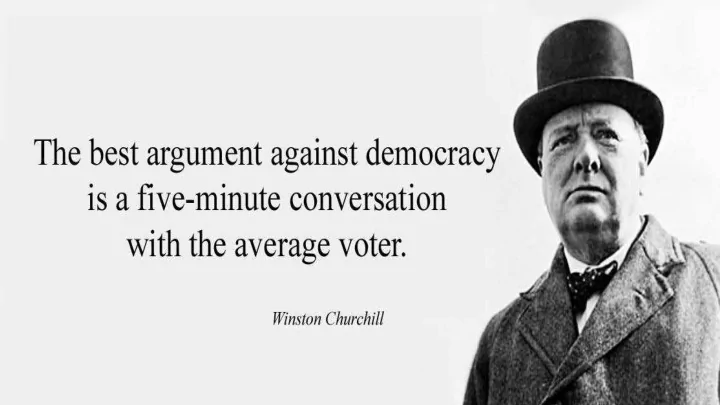

Information Levels and News Sources among Americans By: Kyle Priest Bemidji State University
Misinformed: Answer the question wrong, feel they have the correct answer. Uninformed: Answer “Don’t know,” simply does not know the answer.
When looking at political knowledge, focus is on how many questions a person gets right. This gives an idea of the amount that are knowledgeable but how do we help those who are not? Uninformed – Simply inform them on what the correct answer is Misinformed – Show that their answer is wrong, and somehow get them to believe that. With the rise of ”Always on” news, it is harder to change the ideas of those misinformed. However, we can use this to help inform the uninformed.
CNN and Fox News started a trend of “always-on” news With the introduction of Fox News, CNN started to shift to a more liberal bias as Fox News catered to the conservative viewer. (DellaVigna & Kaplan, 2006) Bias is more entertaining, therefore keeping viewers locked into one side. (Ackerman, 2001)
Those that watch more biased news channels (Fox News, MSNBC) score less on average in political knowledge questions than those who access no news at all. (Cassino, 2012) News channels “Preach to the Choir” by focusing on that demographics' beliefs. (Bartels, 1996) If someone else views a channel as biased, they will disregard the information, and therefore reinforcing their own beliefs, right or wrong. (D’Alesso and Allen, 2000)
Eliminate the Don’t Know option: This study formed three political knowledge surveys DK-encouraged: “Most people don’t know the answer, but try your best…” DK-discouraged: “Are you sure you don’t know? Don’t want to try and guess?” DK-omitted: No DK option available Don’t Know could link to partial knowledge, at least when applied to True/False (Miller and Orr, 2008). Using a more specialized method can grant a more specialized view of PK, but overall the standard testing is an adequate way of gauging knowledge (Rapeli, 2014)
The other methods focus on the right and wrong, and using the correct answer to gauge knowledge. By focusing on the uninformed and misinformed, we have a better look at those who maybe have partial knowledge, and a better idea of how to form a more knowledgeable society. Knowing which demographic is more uninformed can help create media content to counteract it. By taking the data and using demographics to break down how each answered, we can see where the main focus should be for each media source.
2012 national survey done by the PublicMind Poll at Fairleigh-Dickinson University. 9 political knowledge questions with direct correct/incorrect answers. Example: To the best of your knowledge, have the opposition groups protesting in Egypt been successful in removing Hosni Mubarak? (Yes, No, DK) 1185 respondents, must be at least voting age, reached by phone.
12 news media options CNN Talk Radio Show FOX News Local TV News Broadcast MSNBC Sunday Morning Political News Show NPR Local Newspaper National Newspaper The Daily Show National News Broadcast Political Blog or News Site
The younger you are, the more likely you are to answer “Don’t Know” Democrats are more likely to answer “Don’t Know” The more education you have, the less likely you are to answer ”Don’t Know” The more news media you watch, the more likely you are to answer correctly. When it comes to international vs. domestic, international questions are more likely to be answered ”Don’t Know” compared to domestic questions.
Independent Variables Right Index "Don't Know" Index Wrong Index - 1.162*** Gender 1.427*** .125 (. 146 ) (. 178 ) (.101) -.166 ** Party Identification .085 .076* (. .055 ) (.031 ) (.045) -.039 *** -.002 Age .030*** ( .004 ) (. 005 ) (.003) -.596 *** -.211 *** Highest Level of Education .620*** ( .069 ) (.063) (.047) -.376 *** How many different news media consumed .252*** .062** ( .032 ) ( .040 ) (.022) Constant -1.032 9.285 2.012 Adjusted R-Square .261 .302 .028 *p< .05, **p< .01, ***p< .001 Std. error in parentheses
Independent Variables International Questions Domestic Questions Gender .745 *** .572*** (. 100 ) (.098) -.054 Party Identification -.121*** (.031) (.030) -.017 *** -.017 *** Age (.003) (.003) -.250 *** -.318 *** Highest Level of Education (.047) (.046) -.179 *** How many different news media consumed -.187*** (.022) (.021) Constant 4.072 4.870 Adjusted R-Square .229 .225 *p< .05, **p< .01, ***p< .001 Std. error in parentheses
Women are about 1.5 times more likely to answer DK than men, and are a little over one times less likely to answer it correctly. Republicans are less likely to answer DK, yet more likely to answer it wrong. Level of education is significant for each of the three options, and someone with more education is more likely to get questions right than those with lower levels. Consumption of media also raises amount correct, but also raises amount answered wrong.
More specific studies are still needed, but knowing which demographic is uninformed compared to misinformed can help set up a stronger media to help aid political knowledge. By looking into a key demographic, the media can shape around them. DK answers are the most significant, leading to suggest that we should not get rid of them. However, DK could link to more than just their knowledge, such as self-esteem and confidence. Increasing the number of news media you use is a start, but the news media should adapt to focus on a key demographic without heavy bias.
Any Questions?
Recommend
More recommend